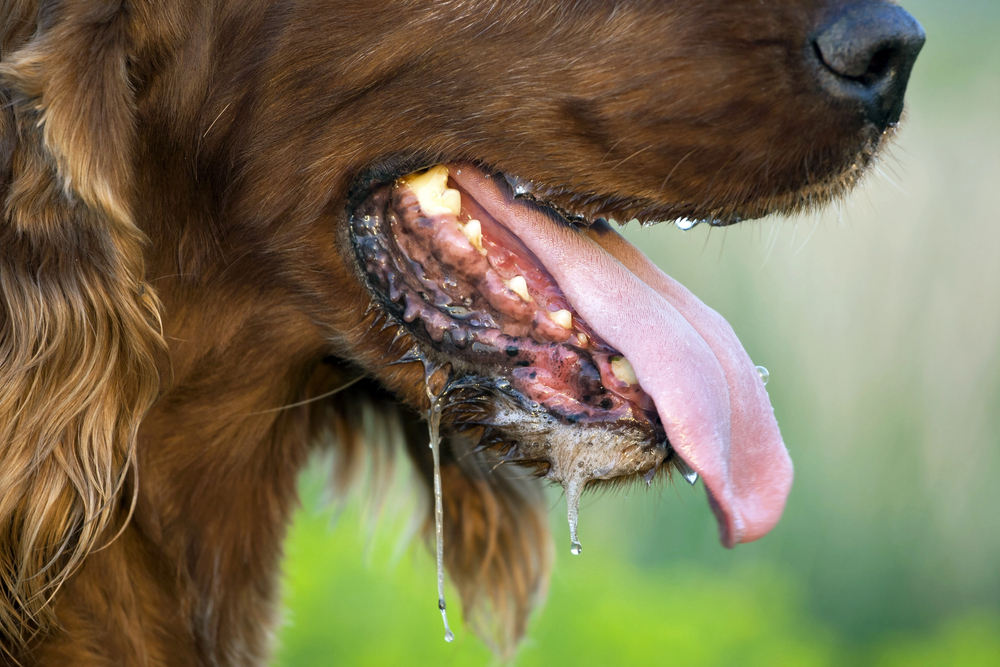
Rabies is a serious and often fatal viral disease that affects mammals, including humans. It is known for its persistent attack on the nervous system and the severe consequences of infection. Although rabies is entirely preventable, it remains a major public health issue in many parts of the world.
Causes and Transmission
Rabies is caused by the rabies virus, which belongs to the Lyssavirus genus and mainly impacts animals. Rabies is most commonly spread by wild animals such as bats, raccoons, skunks, and foxes. Domestic pets, such as dogs, can be carriers, especially in countries where rabies vaccine is not widely available.
The rabies virus can spread through bites or by contact with open wounds or mucous membranes, such as those in the mouth or eyes, if these areas come into contact with saliva from an infected animal. However, it cannot be transmitted through blood, urine, feces, or by touching the fur of an infected animal.
Human-to-human transmission is uncommon, but it can occur during organ transplants or, extremely infrequently when open wounds come into contact with saliva from an infected person.
Once the virus enters the body, it travels along nerve cells to the brain and central nervous system, where it causes a rapid and often fatal infection.
Symptoms and Stages
The duration of time between being exposed to the virus and developing symptoms is known as the incubation period for rabies, and it may vary from a few weeks to several months, depending on the site of the bite and the quantity of virus injected. The illness develops across a number of stages:
- Prodromal Stage :
The initial symptoms of rabies are often flu-like and can include headache, fever, and fatigue. Some people might also experience discomfort or itching at the site of the bite or scratch. This phase typically lasts between 2 to 10 days.
- Acute Neurological stage :
As the virus spreads to the central nervous system, more severe symptoms develop, including agitation, confusion, hallucinations, and paralysis. Patients may also experience hydrophobia (fear of water) due to severe throat spasms. This phase can last for a few days to a week.
- Coma and Death:
This stage typically emerges within a few weeks after severe symptoms start and progresses to coma, ultimately resulting in death, usually due to respiratory failure or other complications.
Diagnosis
Laboratory testing is vital for verifying a rabies diagnosis, employing various methods to identify the virus. Using a combination of these tests ensures a precise and prompt diagnosis, which is crucial for effective treatment and prevention.
1.Direct Fluorescent Antibody (DFA) Test:
The Direct Fluorescent Antibody (DFA) test is a highly specific and widely used diagnostic tool for detecting the rabies virus in brain tissue. It is considered the gold standard due to its high sensitivity and accuracy. The test involves processing brain tissue samples, applying fluorescently labeled antibodies to detect rabies virus antigens, and examining them under a fluorescent microscope. While DFA is reliable, provides quick results, and is crucial for confirming rabies diagnosis, it requires brain tissue, specialized equipment, and trained personnel, and is not suitable for early-stage infection detection. It is primarily used for post-mortem diagnosis, confirmatory testing, and research.

2.Polymerase Chain Reaction (PCR):
The Polymerase Chain Reaction (PCR) test is a highly sensitive and versatile method for detecting the rabies virus in various biological samples. It is particularly useful when other tests, like the Direct Fluorescent Antibody (DFA) test, are not suitable or need further confirmation. PCR can detect low levels of viral RNA, works with different sample types, allows for early detection, and helps confirm results from other tests. However, it requires specialized equipment and trained personnel, can produce false negatives if sample quality is poor, and is more costly and time-consuming than some other methods. Despite these drawbacks, PCR is essential for accurate and early rabies diagnosis, enhancing disease Management.
PCR works by producing certain viral RNA segments using the following steps:
- Sample Collection: Collecting samples like brain tissue, cerebrospinal fluid, or saliva.
- RNA Extraction: Isolating viral RNA from the samples.
- Reverse Transcription: Converting RNA into complementary DNA (cDNA).
- Amplification: Replicating the cDNA using primers to detect the virus.
- Detection: Identifying the amplified DNA with fluorescent dyes or probes.
3.Enzyme-Linked Immunosorbent Assay (ELISA):
ELISA can detect rabies virus antigens or antibodies in blood samples, providing a rapid serological test that avoids handling live virus. Although it is less commonly used, it supports diagnosis, especially when combined with other tests, by detecting antibodies that specifically bind to rabies virus antigens, such as the glycoprotein and nucleoprotein.
4.Immunohistochemistry:
Immunohistochemistry (IHC) is a method for detecting rabies virus antigens in brain tissue and other samples. It uses specific antibodies and a detection system to visualize the virus, providing detailed information about its location. IHC is highly specific and useful for confirming rabies, researching the virus, and examining tissue damage. However, it requires well-preserved samples, specialized equipment, and skilled interpretation, and is not suitable for early detection. In comparison, the Direct Fluorescent Antibody (DFA) Test is best for rapid and specific detection of rabies in brain tissue, while IHC offers detailed visualization for research and confirmation purposes.
Treatment Protocol
It’s essential to get medical attention right away after potential exposure to rabies to reduce the risk of developing the disease:
1.Wound Care: The initial step in preventing rabies is to wash the wound thoroughly with soap and water as soon as possible. This action helps to eliminate the virus from the wound and lower the risk of infection.
2.Medical Evaluation: The primary approach to treating rabies is post-exposure prophylaxis (PEP), which is essential for preventing the disease after possible exposure. PEP consists of:
- Rabies Vaccination: This helps activate the immune system to create antibodies against rabies and is usually administered as a series of injections in the arm over several days.
- Rabies Immune Globulin (RIG): Offers immediate defense by providing pre-formed antibodies, given as a single dose either at the site of the bite or through an injection, typically used together with the vaccine for complete protection.
Rabies Prevention
Preventing rabies involves a multifaceted approach, including:
- Vaccination: Ensure your pets are vaccinated against rabies. For individuals at high risk, such as veterinarians, animal control officers, and certain travelers, Pre-Exposure Prophylaxis (PrEP) may be recommended.
- Avoiding Exposure: Take measures to prevent contact with animals that may have rabies.
- Public Education: Educate the public about rabies prevention and the importance of seeking medical attention after potential exposure.
By following these strategies, individuals can significantly reduce the risk of rabies and protect themselves from this deadly disease.
Conclusion
Rabies continues to be a major public health issue, especially in areas where it is common among wildlife or domestic animals. Effective management and control of rabies rely on early detection, prompt treatment, and preventive strategies. By recognizing symptoms, using diagnostic tests, following treatment guidelines, and promoting vaccination and public education, we can strive to lessen the impact of this serious disease.
